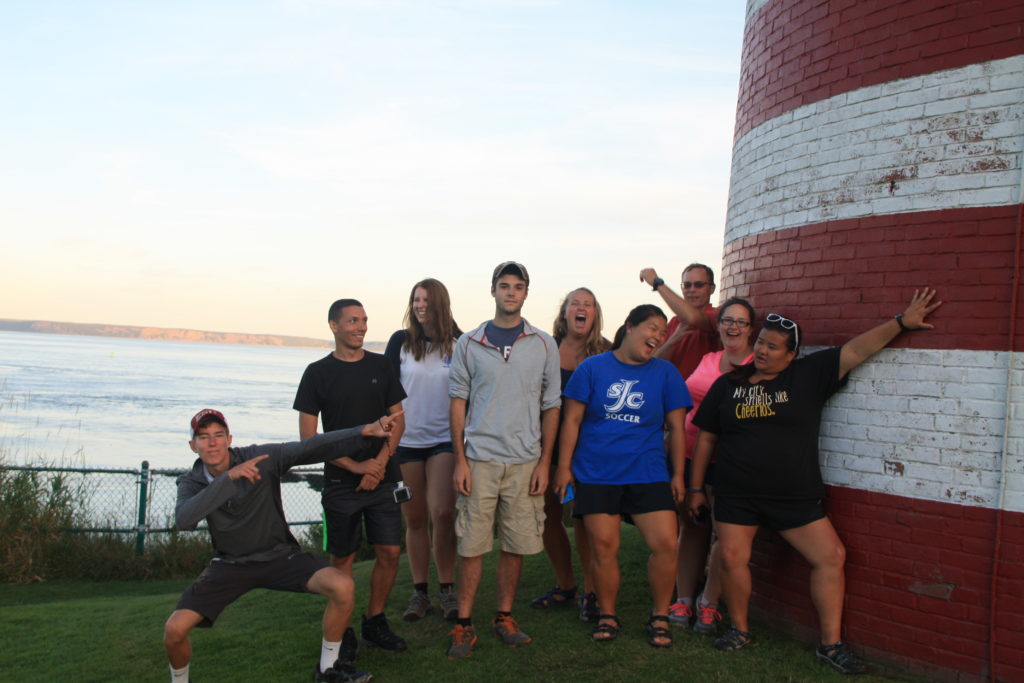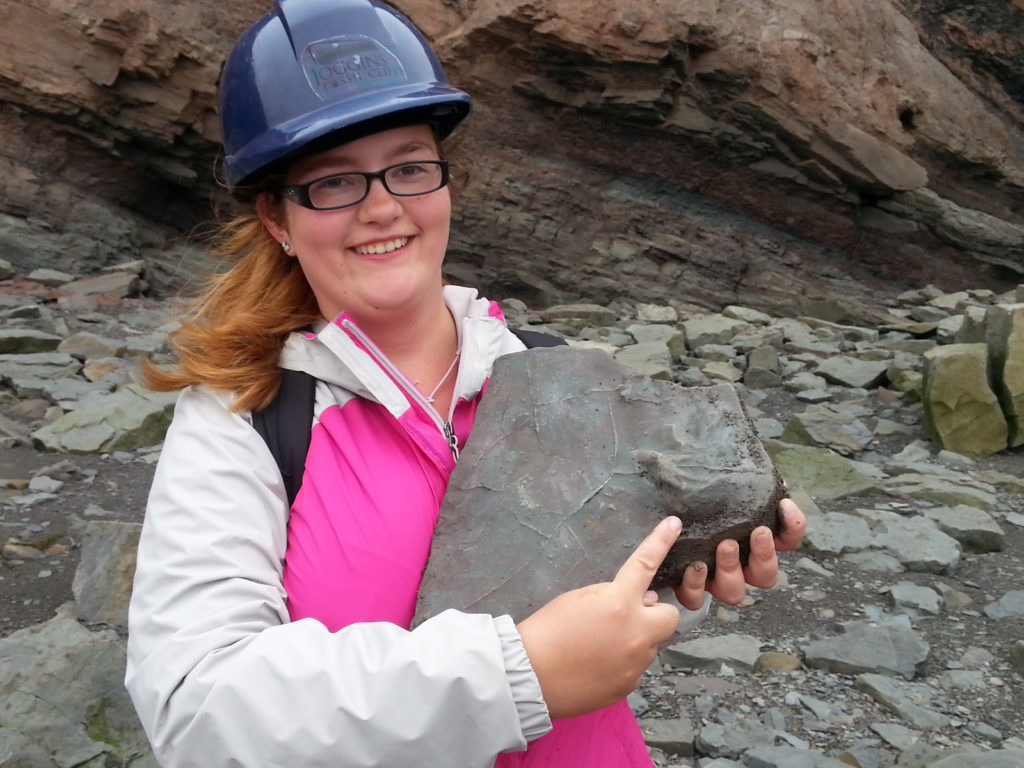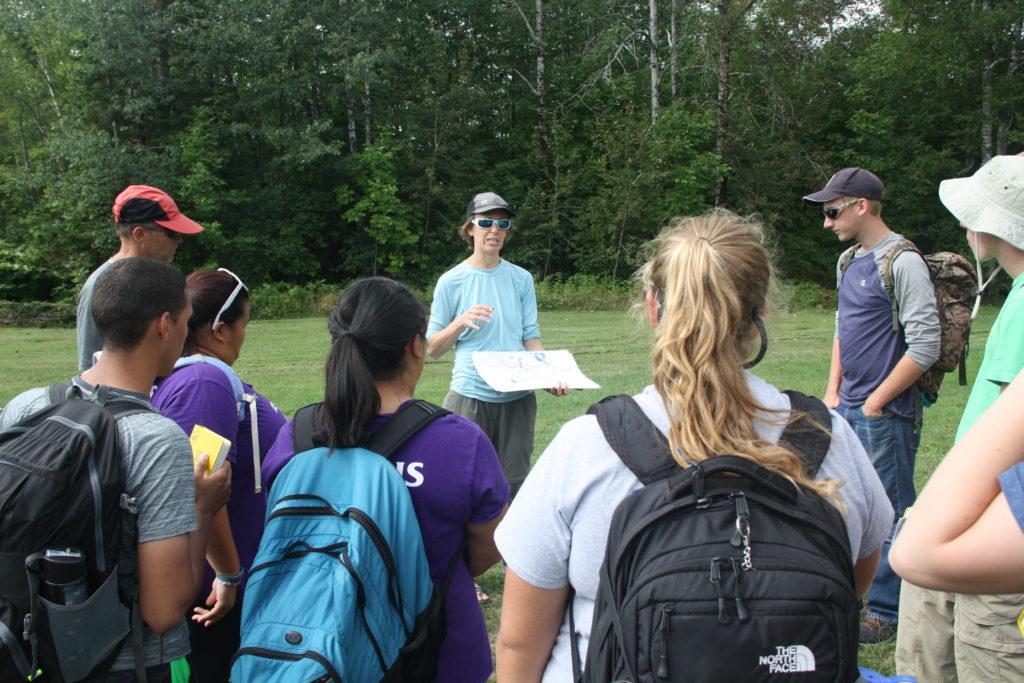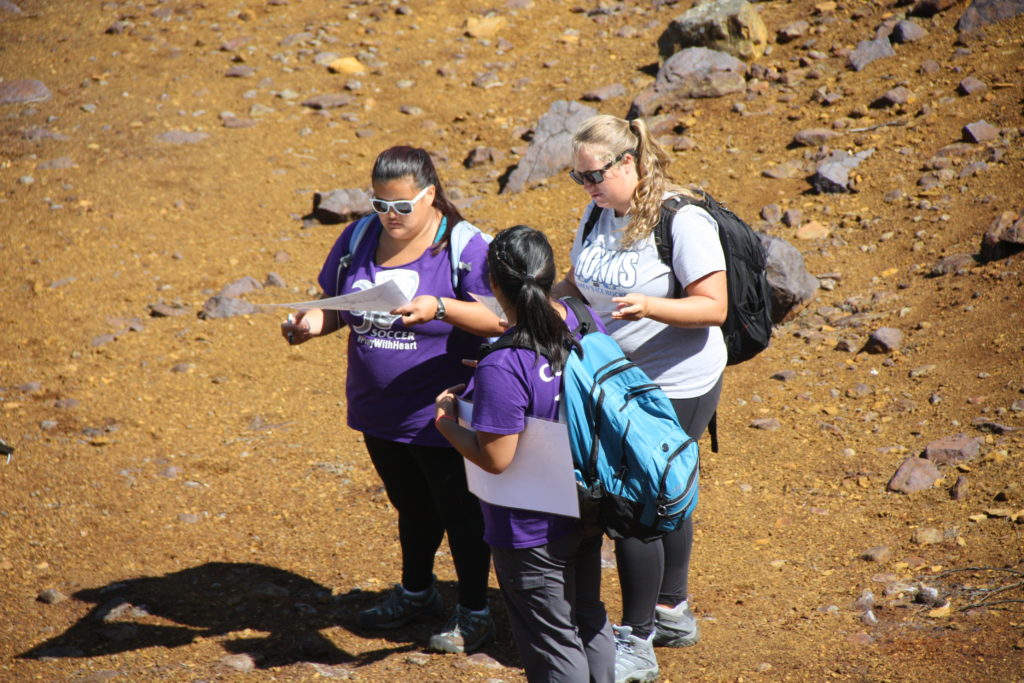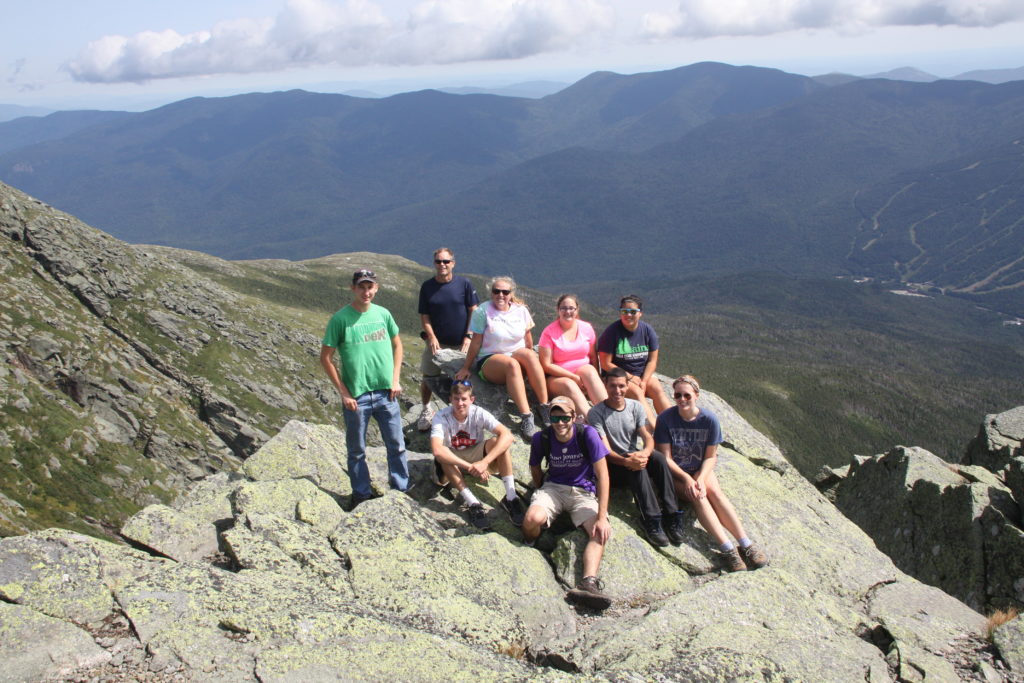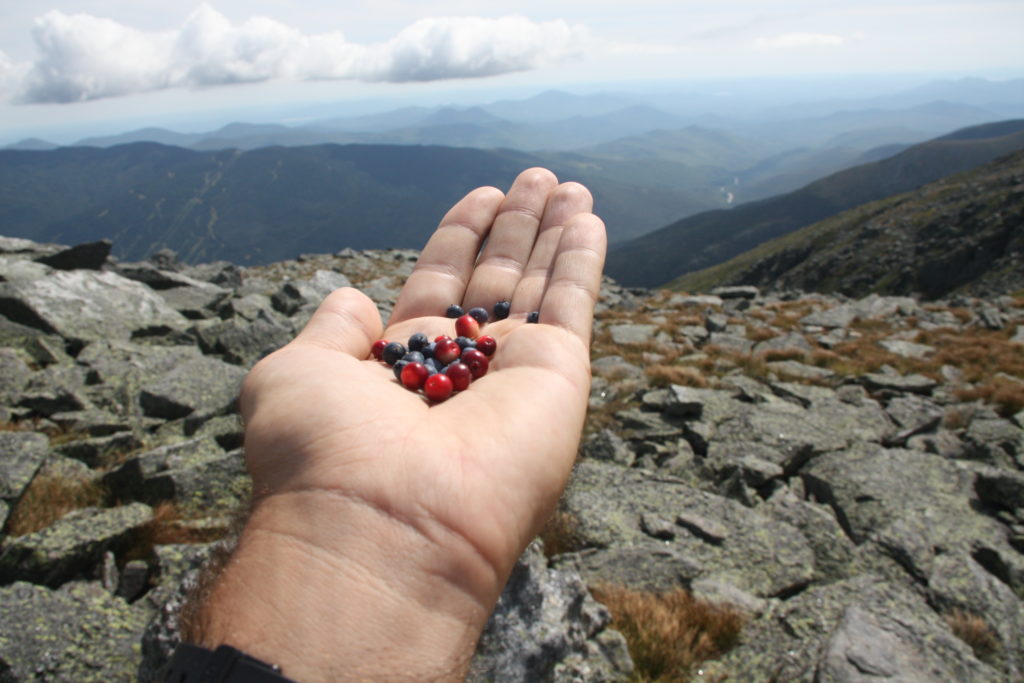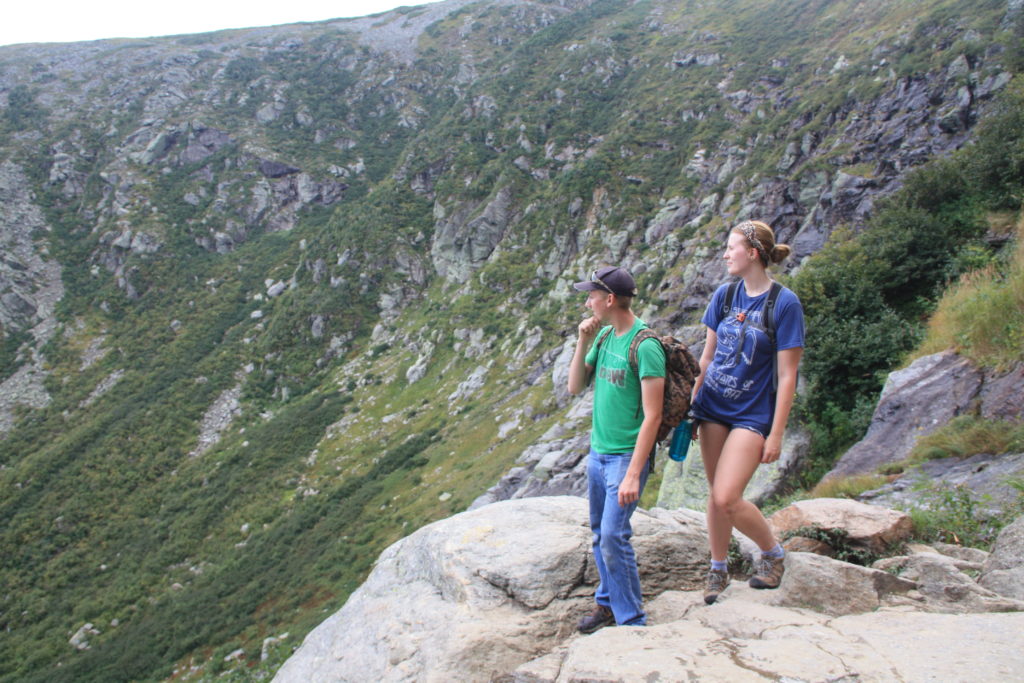It’s time for me to write a post, since the students are immersed in writing a paper and preparing for a final in Climate Change and Glacial Geology. Yes, it is very early September and they are faced with a paper and a final. We’ve been on the road for over 3.5 weeks, which puts us 1/3rd of the way through the ESS. Quite soon, we will finish here (Crawford Notch in the White Mountains of New Hampshire) and head to Popham Beach, where Prof. Greg Teegarden will start leading the students though Marine Ecology. But before we wrap up here, let me point out some highlights.
Blueberry fields near Cherryfield, Maine grow on deltas that accumulated in a frigid sea when relative sea level was briefly 60 m higher than today about 15,000 years ago as glaciers receded. Joe O’Reilly joined me and Andrew atop an enormous boulder carried to this site by icebergs.
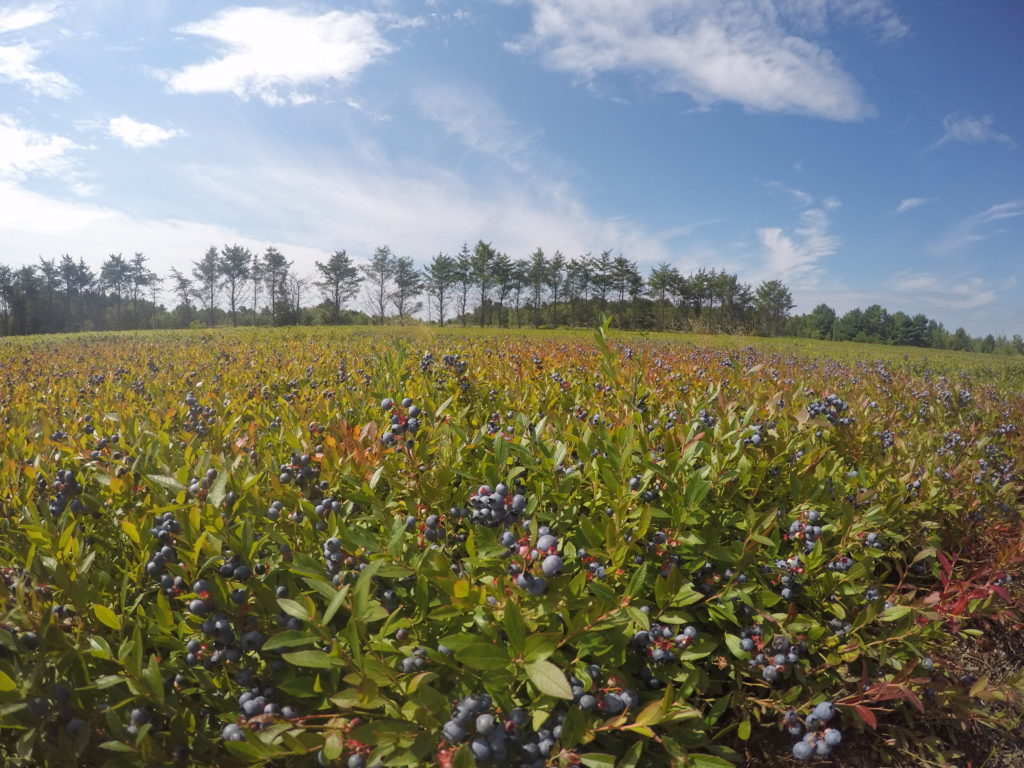
West Quoddy Head lighthouse is the easternmost point in the US. Everyone seemed amused thinking that there were 320 million Americans to the west of us, and zero to the east!
It’s hard to appreciate just how fast the tide can come in. At Fundy National Park in New Brunswick, we studied the 1 km long Point Wolfe inlet. We were in the flat, middle part of the section when the tide caught up with us. The water was creeping over the land nearly at walking speed. Stand still to take a measurement, and the water would rise above our ankles. Crossing the “little” intertidal stream on the incoming tide got Emma Mills ’19 in water up to her chest.
At Joggins Fossil Cliffs in Nova Scotia (a UNESCO World Heritage Site), we walked along beach cliffs (at low tide!) for about 5 km and through about 5 million years of ancient, really ancient history. These rocks have yielded the oldest reptile fossil in the world at about 310 million years (forgive me if my memory is off by a few million). We were there to look at how climatic and environmental conditions can be reconstructed; these rocks accumulated in a tropical swamp with nearby mountains generating a rich supply of river sediment. Danielle Martin ’19 found a block with fossilized mud cracks and the toe/claw imprints of a crocodile-sized amphibian; this block was so special the guides added it to the permanent collection in the site’s museum.
In Halifax, the city’s signature historical feature, the Citadel, is built atop a drumlin. The drumlin was formed by glacial ice moving and molding sand and gravel debris into an oval mound. Several of us enjoyed a nice hour of Frisbee tossing on this late Ice Age feature.
The moonless night sky in the northwoods east of Greenville was absolutely beautiful. Sorry, no nighttime photos, but I’ll include a morning photo. And nighttime photos wouldn’t do it justice anyways. The sky (as viewed from boats on the still lake) had so many stars that it felt four-dimensional – I felt the immensity of it as we looked deeper into space to more distant and fainter stars. Some students saw the Milky Way for the first time in their lives. Defintely a highlight.
Prof. Emily Lesher led us through an investigation of the chemistry and landscape associated with acid mine drainage. Strictly speaking, this material was part of the Field Methods course, but by now the students are used to switching back and forth between different course content. Personally, I really enjoyed seeing students engage with new material and another professor. Many of them will be in Prof. Lesher’s Environmental Chemistry class in the spring, when this real-world example will surely come up.
We drove up Mount Washington yesterday in order to get a view of several cirques created by alpine glaciers, most notably Tuckerman’s Ravine, Huntington’s Ravine, and the Great Gulf. A short walk to the lip of Huntington’s headwall led to more than one reassessment of what “steep” looks like. While there in the Alpine Garden, we enjoyed a late summer snack of wild blueberries and mountain cranberries. Some of us, including Jess Selva ’17 and Tyler Allen ’18, hiked over 4000 vertical feet from Mount Washington’s summit down over the headwall of Tuckerman’s Ravine and out to Pinkham Notch; legs were a bit stiff today!
We’ve endured just over 2000 miles of driving so far. It’s a really long way from Portland to Halifax. Fortunately, the longest distance to be covered in the remaining 6 weeks will be done on a schooner!
– Prof. Johan Erikson
